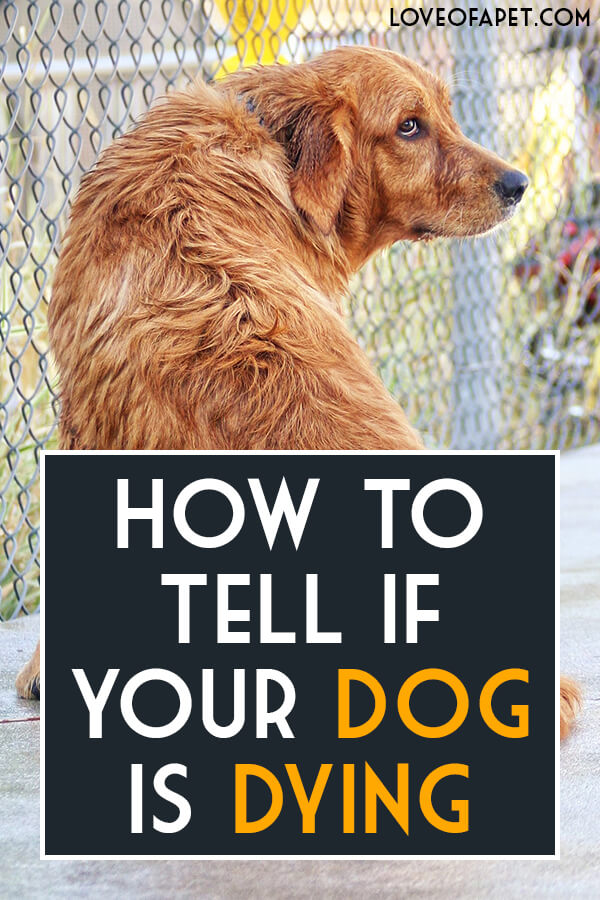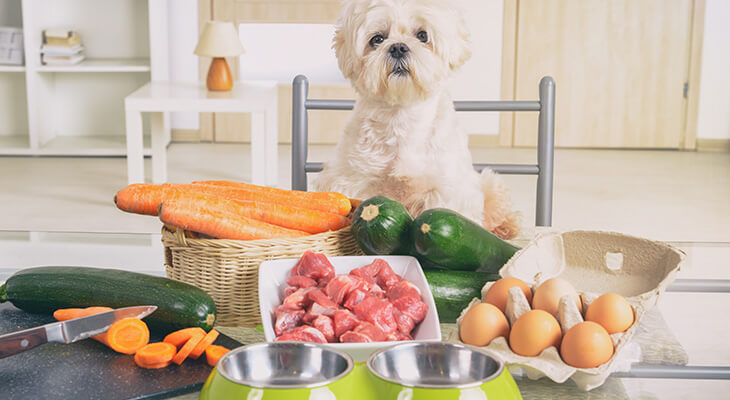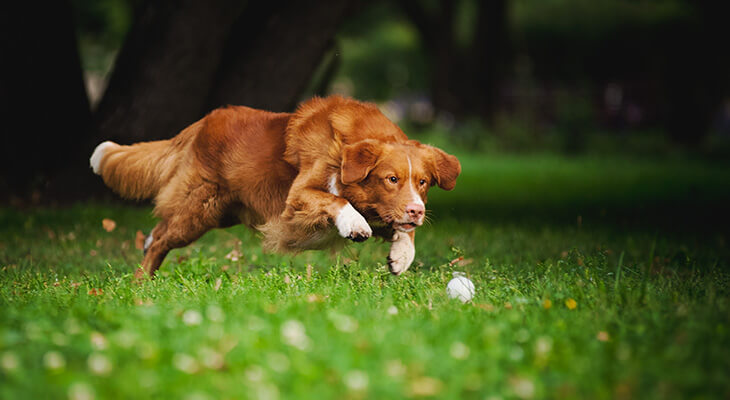There are numerous benefits of having a dog, few of which are: they help us live in the present by giving all their attention to us and in return, we also give them our undivided attention. We can’t be anywhere else if we are beside our dogs giving us cuddles.
They are great stress-relievers, aren’t they? They also give us the feeling of being needed, they make us feel important because they need us, owners, to take care of them and make them happy. And they make us happy too. Just patting our dogs trigger the production of oxytocin (the feel-good hormone) in our bodies.
They also make us more social with other dog-owners when we walk them outside. They prevent us from being isolated and encourage us to be more physically active. I guess these reasons are why dogs are the most popular pets worldwide.
Pet-owners acknowledge the fact that dogs have limited time to live. But it doesn’t eliminate the dread of losing them. We treat our pets as family that is why losing them is so heartbreaking. If you have a dog who has a terminal illness in his golden age, this article is for you.
Herewith are the signs you might watch out and the immediate care you may do:
Contents
An Early Indication That a Dog Is Terminally Ill:
1. Lethargy
Decrease energy and lack of enthusiasm.
The dog may:
- Sleep more than usual- may want to sleep a lot. Most probably to conserve energy. May go to areas where it can be at peace with the environment.
- Shows lack interest in habitual activities- Usual behavior may seem to lessen or disappear.
- Have poor sanitation- may no longer seem to condition itself as before.
What to do:
- Give more time to your dog to rest and sleep. Let it rest as much as it needs.
- Give a comfortable place to rest. Provide a comfortable bed and blanket.
- Provide a calm and quiet environment as possible- free from unnecessary noise or other environmental stimuli.
2. Diminished to No appetite
Normally seen in terminally ill dogs, especially for dogs with cancer and who are receiving chemotherapy treatments. Due to nausea as a side effect of drugs being received, they tend to be disinterested in eating.
The dog may:
- Have a dry and sticky mouth due to dehydration
- Not seem to enjoy eating
- Eats a small amount of food less often or may not eat at all due to vomiting.
- Tend to be picking and eat only familiar food
What to do:
- Provide small frequent meals as possible. – Usually soft and liquid- foods that are easily digested.
- Feed him with his favorite foods – pay close attention to his nutritional needs
- Warm the food you’ll give to make it more palatable and if possible, hand-feed them.
- Consult a vet for medication that could help increase your dog’s appetite
3. Decrease in weight
Slow or sudden loss of weight may be due to degenerative diseases or some types of malignancies.
The dog may:
- Show changes in the appearance (looks weak and skinny) as a result of severe weakness and body wasting which is commonly known as cachexia.
What to do:
- The intervention focuses on food and nutrition.
- Provide small frequent meals as possible. – Usually soft and liquid- foods that are easily digested.
- Feed him with his favorite foods – pay close attention to his nutritional needs.
- Warm the food you’ll give to make it more palatable and if possible, hand-feed them.
- Consult a vet for medication that could help increase your dog’s appetite.
- Monitor your dog for signs of progression or deterioration.
4. Social Isolation/ detachment
Separating oneself physically and socially.
The dog may:
- Seem likely to ignore you on whatever you do instead of being excited and curious
- May become clingy but most times tend to seek distance and seeks alone time.
What to do:
- Respect the need for rest and quiet environment
- Spend time with your dog, approach them quietly and calmly, touch them gently.
- Provide a calm and quiet environment as possible- free from unnecessary noise or other environmental stimuli, avoid bright lights as well.
- Keep them comfortable and warm, place them in a well-ventilated room.
Impending Indication That a Dog Is Dying:
1. Diminish activity/mobility, Balance Issues
Because of decrease glucose, body weakness can be felt, resulting in muscle twitching spasm.
The dog may:
- Have a hard time to move.
- It requires a lot of effort to do a simple task.
- Starts to stumble as it tries so hard to move about.
What to do:
- Be sure that its immediate environment is slide proof.
- Assist when you see them trying to stand
- Consult your vet, ask if they can provide harnesses or slings for mobility support.
2. Diminish sense of thirst
Decrease the ability to drink water or diminish swallowing reflex is a dangerous sign for it might lead to severe dehydration.
The dog may:
- Have a hard time to chew hard foods.
- May cough out and or choke in some solid food.
- Be uncomfortable in eating and drinking.
- Not be walking towards his water bowl anymore.
What to do:
- Provide easier access to food and drinks. Be sure that the water bowl has water in it and is within reach.
- Provide caution in feeding. Observe its ability to swallow.
- Contact a vet if the condition worsens.
3. Bowel Incontinence
Lack of control over urination and defecation due to decrease control on sphincter muscle.
The dog may:
- Soil easily. Wet at poops on his blanket due to body weakness.
What to do:
- Provide disposable underpads for the dog to urinate and defecate or place diaper. Check by and by if soiled. Change accordingly.
- Check the output for its appearance, color, and smell. Contact a vet if it is abnormal in color.
- Consult the vet if the condition worsens.
4. Restlessness
Noticeably uneasy with the present condition, anxious, very uncomfortable.
The dog may:
- Exhibits behavioral changes- may pant, may cry, and may try to get up.
- May need to be reposition at times when in need of something especially if bedridden.
What to do:
- Pay attention to cues, anticipate their need, try to check and offer it.
- Keep them calm, provide comfort and safety measures.
- Try to reassure them by being with them, talking and touching them gently as possible.
- Consult the vet if symptoms worsen.
5. Pain
Is subjective, but since dogs cannot say it in a way we humans can understand, we must observe for the non-verbal cues:
The dog may:
- Tend to be restless and agitated, easy to anger and may cry.
- Have changes in vital signs (all are up)
What to do:
- Provide comfort measures and Pain control.
- Give pain medication as ordered.
- Consult a vet if seemed to be unrelieved with meds.
6. Breathing Changes
Changes in breathing patterns are seen due to weakness for the dog’s respiratory muscle to inhale and exhale.
The dog may:
- May show signs of slower and irregular breathing and may pause between breaths. May use mouth to breathe as well.
- May show fast and shallow and labored breathing when in pain- a common sign in near death.
What to do:
- Bring your dog to a vet clinic for prompt management and care.
7. Gum color changes
Normal healthy dogs have a noticeable pink gum color.
The dog may:
- Have its gum turns to pale, bluish to whitish due to poor circulation.
What to do:
- Consult the vet to provide immediate relief
8. Cooler body temperature
The normal body temperature of a dog is about 38-39 Degrees Celsius (100-102 Degrees Fahrenheit)
The dog may:
- Have its body temperature to drop hence, cool to touch.
What to do:
- Provide blankets, keep them warm.
- Consult a vet for medication to be given as needed.
Have the Courage to Say Goodbye
It’s never an easy thing to bid farewell to your dog who became a part of your daily life’s highs and lows. There are times when everyone is so busy wherein you have no one to talk to, no shoulder to cry on, and no emotional support from your friends and loved ones, and all you have is a dog who reminds you that you are not alone in this journey — that someone waits for you and needs you.
It’s one of the most powerful feelings in this world, right? That someone needs you to be strong because they need you. They give you reasons to get up and face life’s challenges. They make each day so special. But what if your dog’s health is now deteriorating because of a terminal illness or old age? Understandably, you would not let go instantly — you’ll face many times of denials.
Holding on to your dog will be the first thing you will do — you’ll try to lengthen his life and it’s understandable, but do you want to see him suffer or just enjoy the last days of his life? I’m sure, you’ll choose the latter even if it’s hard. We have to accept the fact that good days end. Special days end, and that what makes it so special. Here’s how you can get the best out of the remaining days of your dog:
1. Try your best to be okay
Your dog feels your emotions. He knows when you’re sad and miserable. But he needs you now; he needs you to be strong. Show him that you can continue on your own because surely, he wants the best for you!
2. Prepare his favorite meals
Prepare everything your dog wants. You know his favorites, so you know what will make him happy.
3. Spend more time with him
Life is so demanding that sometimes, we are too busy to give enough time with our dogs. So, take these remaining days to play with him.
4. Be sensitive to his needs
Prepare the resources needed to reduce the suffering of your dog. Prepare the pain killer medications and other essentials prescribed by your veterinarian.
5. If your dog is saying goodbye, let go.
Euthanasia may be your last resort, but it is for the best. Our goal here is to have quality time, not a long but full of suffering time. Remember, quality not quantity. Bring him to your veterinarian, and trust the process, let go.
Losing a pet is one of the worst feelings in this world. But we have to deal with it. It might leave you with unbearable pain but do yourself a favor and find something productive to put your energy into. After taking good care of him, know that it is not your fault that he is gone. Do not blame yourself because your dog thinks otherwise; he thinks that you’re the most amazing thing that happened in his life. No one fully recovers from a loss, but every day, it gets better.






In 2017 I Lost my seven year old White Labradors to cancer. I spent almost 10.000 dollars in treatments. In the end she had to be euthenised. 3 years later in July 2020. I have her older
mother (11) battling cancer. She had surgery today to remove a tumor.
My dog died yesterday ???? I can’t get over my Jerry we spend 15 years toegether. We were a beautiful Team. God I miss him so much. I never left his side neither did he leave mine. I feel like dying …..I just wan’a be with me Babe Jerry.????????????????????????????????????????????
Your love and courage are incredible to me! I lost my baby boy 17 weeks ago to cancer! I had the vet come to the house! I really don’t know how I found the strength to hold his head in my lap! I guess the love we had for each other, I only had him for 6 years how blessed we were! The grief will never leave me! Keep loving them your a special person God bless you!
When discussing with my vet how to know when to euthanize my arthritic dog, my vet offered this sage advice, “Nearly every pet owner waits too long to put their pet down.”
It’s true, it’s such a hard decision and makes you feel so helpless about whether it’s the right time. Since then, it helps me make that hard choice when I recall my vet’ words.
I had my Belgian Shepherd for 19 years. Like the majority of people reading this article, know that she was a huge part of my life and the happiness we gave each other was so very special. I took her to the vet on a day when I felt strong enough to do it and came home on my own.
I love my animals as they are human, I have lost one at 15 and I have one now that’s 17, small dogs live a long time plus I have cooked for them since being small.I love them so much and it’s so hard to let go.I have always said that I have to out live them because I would never want them to feel alone. I’m 66 now and have 4. I love them all with my whole being.
I lost my sweet boy of 14.5 years. I loved him so much and I felt his love. I also lost my other sweet boy of 14.5 about 5 weeks later, and he was such a lover boy. They were the loves of my life. I had to let go of them during this Pandemic and was unable to go back with either of them which killed me. That was last August an October. My heart is still broken. 😩😢
I had to euthanize my 14 year old Ava on June 25th. I raised her from a puppy. 2 days later I lost my home and moved in with a friend till I can find a place. But I had my 4½ yrs old to help me through it. I also raised him from a puppy.
Then less than two months later on August 18, a neighbors dog came into our yard and attacked my Buddy. He chased the dog when it gave up and ran. The dogs owner was waiting with a gun and shot and killed my Bud Bud.
I am devastated and I don’t know how to go on without them. They were my children, my babies, my life.
3 days ago I lost not only my service dog and my best friend do to lung cancer he was almost 8 yrs old. Being a retired Army vet that has served in Iraq and in Afghanistan, I’ve seen and have done a lot of things that have hurt me inside. The pain of losing my best friend Roadie has been the worst I’ve ever felt. I never realized how much I talked to him and how much I watched over him until now because now I’m lost and alone. My heart goes out to everyone who felt the pain such as this.